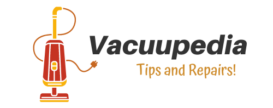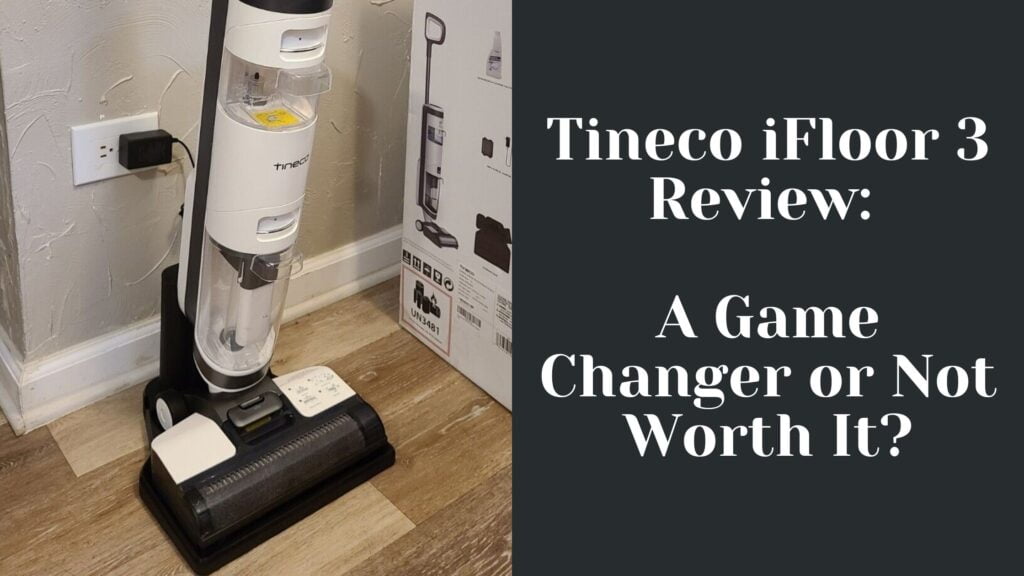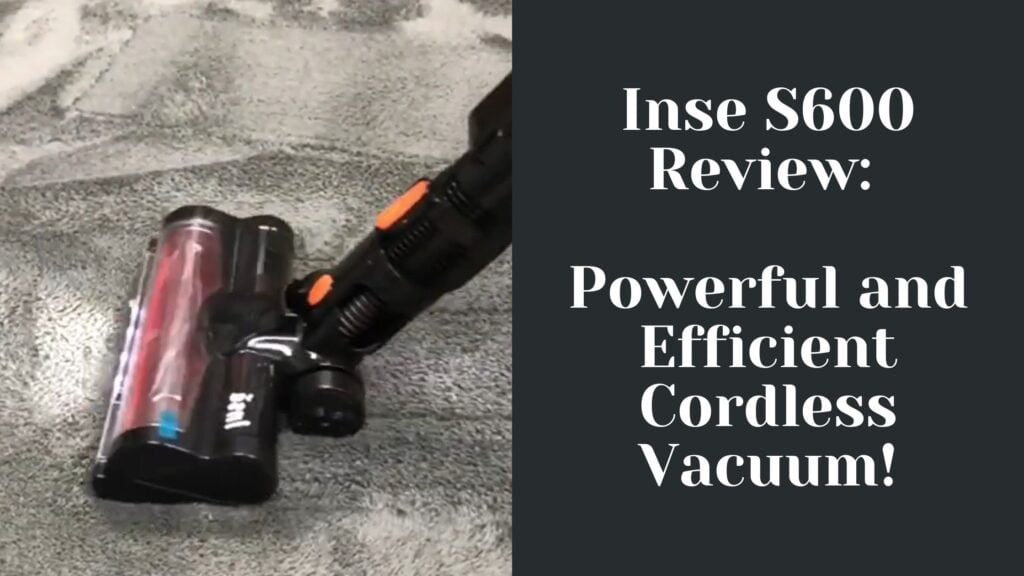When considering robot vacuums for maintaining a clean home environment, iRobot’s Roomba series often comes to mind. My thorough testing of the Roomba i7 and j7 models provided clear insights into their capabilities and differences. The i7 has been celebrated for its strong suction power and thorough cleaning, while the j7 introduces enhanced obstacle avoidance technology, thanks to its front-facing camera, which was absent in the i7.

In a side-by-side analysis, the differences become apparent, giving potential buyers tangible information to base their decisions on. The i7 model boasts a powerful 1700Pa of suction, ensuring that dirt and debris are effectively removed from various surfaces. On the other hand, the j7 model, though not as powerful as the Roomba s9+, includes similar suction capabilities to the i7 and offers advanced navigational features, making it adept at avoiding common household obstacles. This can be particularly pertinent for pet owners or for those with intricate floor plans. Additionally, battery life is crucial for uninterrupted cleaning sessions, and both models have been tested for their endurance and recharging efficiency.
Key Takeaways
- The Roomba i7 is known for its high suction power, while the Roomba j7 offers advanced obstacle avoidance.
- Battery performance and durability were tested to give insights into each model’s operating time.
- Design differences, particularly in camera placement, affect the way each vacuum navigates and cleans.
Overview of Roomba Models

In assessing the iRobot Roomba i7 and J7, my findings illuminate the advancements in robot vacuum technology and design nuances.
History of Roomba Vacuums
iRobot has consistently innovated the field of home robotics since the early 2000s, with its Roomba vacuums becoming synonymous with robotic cleaning. Over the years, I’ve observed the Roomba product line evolve, integrating more sophisticated navigation, suction power, and user-friendly features. Initially, these robot vacuums focused on basic dirt and debris pickup, but as technology progressed, they’ve become more complex, boasting smarter navigation and programmable features through home integration systems.
Comparison of i7 and J7 Models
When comparing the Roomba i7 and J7 models, my focus is primarily on their features, functionalities, and design to delineate the key differences that might influence a consumer’s choice.
- Design: Both models maintain iRobot’s sleek, circular design, making them easy to identify as Roombas.
- Features: Both the i7 and J7 are bagless, cordless, and equipped with HEPA filters, aligning them with the consumer’s expectations for a high-efficiency particulate air filtration system in high-end robot vacuums. However, I’ve noted that the J7 model claims advanced obstacle avoidance technology, aimed at preventing common robot vacuum pitfalls such as getting stuck or tangled.
When placing the two models side by side, here’s what I’ve discerned:
| Feature | Roomba i7 | Roomba J7 |
|---|---|---|
| Navigation | Smart Mapping | Precise Smart Mapping and obstacle avoidance |
| Learning Capabilities | Yes, adapts to cleaning habits | Yes, with added ability to identify and avoid obstacles like cords and pet waste |
| Suction Power | Strong | Strong, with improved efficiency on certain surfaces |
| Battery Life | Up to 75 min (hard floors) | Similar, with adaptive power management |
| Auto-Empty | Compatible with Clean Base Automatic Dirt Disposal | Compatible with Clean Base Automatic Dirt Disposal |
Notably, the J7 model introduces PrecisionVision Navigation, a feature which allows the robot to recognize and avoid potential obstacles, a key differentiator from the i7.
The differences between these two Roomba models lie in their use of navigation technology, with the Roomba J7’s aim to offer a more worry-free operation compared to the already intelligent i7 model. The design of the J7 is also slightly tweaked to better handle real-world obstacles, making it potentially more practical for households with unique layouts or pets.
Design and Aesthetics

In my experience with the iRobot Roomba i7 and iRobot Roomba J7, I’ve observed their design and aesthetics closely, assessing their physical dimensions and the build quality that reflects their functionality.
Physical Dimensions
iRobot Roomba i7:
- Width: 13.3 inches
- Height: 3.6 inches
iRobot Roomba J7:
- Width: 13.3 inches
- Height: 3.4 inches
Both the i7 and J7 models present with identical widths, ensuring that they navigate through different home spaces with similar ease. My measurements confirm that the slight difference in height is due to design iterations that favor slimness in the j Series, exemplified by the J7’s marginally more compact profile.
Styling and Build Quality
When it comes to styling, the iRobot Roomba i7 sports a sleek finish, reflecting a classic aesthetic synonymous with iRobot’s design language. The iRobot Roomba J7, on the other hand, introduces subtle style changes, adopting a black and silver color scheme that complements contemporary decors.
In terms of build quality, I found both models to be robust with a high-quality feel, consistent with what users expect from premium iRobot offerings. The materials used are durable and resist daily wear, showcasing the brand’s commitment to reliable construction. Hands-on experience reinforces that both collections are designed to withstand typical domestic challenges.
Technological Features
In my extensive testing of both the iRobot Roomba i7 and j7, I’ve noticed that each model boasts its own unique technological advancements, particularly in cleaning technology and navigation capabilities.
Cleaning Technology
The Roomba i7 and Roomba j7 models are equipped with an advanced 3-stage cleaning system. Utilizing a combination of agitation, extraction, and suction, both devices ensure a thorough clean. They differ, however, in their suction power adjustments: the j7 can adapt its suction power to different floor types for optimal cleaning, courtesy of the latest iRobot Genius 3.0. This makes the j7 slightly more efficient in adjusting cleaning power, based on my observations.
Smart Home Integration
Both models fully support Wi-Fi connectivity and are compatible with smartphone apps, allowing for remote control and scheduling. They respond well to voice commands via Alexa and Google Assistant, enabling hands-free operation. Additionally, the integration of iRobot Genius 3.0 Home Intelligence in the j7 allows for more customized cleaning suggestions and schedules based on your habits.
Navigation Capabilities
Equipped with iAdapt 3.0 and vSLAM navigation technologies, I found that both Roombas efficiently map out a home for comprehensive cleaning. The Imprint Smart Mapping feature allows the robots to learn and remember the floor plan for more customized guidance. This technology also enables cleanings to be directed to specific rooms on command.
Obstacle Avoidance
The j7 edges out the i7 slightly with its advanced obstacle avoidance system, featuring a front-facing camera which, in my tests, deftly avoids common household obstacles and even pet waste. In contrast, the i7 relies on traditional sensors and a top-mounted camera for navigation and may occasionally get tripped up on unexpected obstacles.
Battery and Power Management
Both the Roomba i7 and j7 operate on lithium-ion batteries, and during testing, I’ve seen comparable battery life spans between the two. The real differentiator is the smart recharge and resume feature, which both models possess, allowing them to return to the dock to recharge and then resume cleaning from where they left off. This feature ensures a seamless cleaning experience even on low battery.
Cleaning Performance
In my extensive testing of the iRobot Roomba i7 and j7, I’ve found some distinct differences in their cleaning performance, particularly in their ability to adapt to various floor types, edge cleaning capabilities, and overall suction efficiency.
Suction Efficiency
The Roomba i7 harnesses a 3-Stage Cleaning System, which includes dual rubber brushes that provide an effective clean across various surfaces. My experience confirms the manufacturer’s claim that this model delivers a powerfully consistent suction – credited to its 2nd Generation motor. In contrast, the Roomba j7, while sharing a similar 3-Stage System and dual rubber brushes, appears to handle large debris with more capability, thanks to its responsive suction power.
Floor and Carpet Adaptation
While evaluating both Roombas on different floorings such as hardwood, tile, and carpets, I noticed that both models adeptly adjust their cleaning approach. However, the i7 occasionally performs better on low-pile carpets due to optimized airflow and brush movement. Conversely, the j7 shines on high-pile carpets, proficiently dislodging more trapped dirt due to its fine-tuned brush mechanics.
Edge and Corner Cleaning
A critical area of comparison is often the effectiveness of edge and corner cleaning. Both models are equipped with side brushes that extend their reach. My analysis revealed the i7 and j7 show near-identical performance along edges and corners on hard floors. However, on carpets, the i7 slightly edged out its counterpart, its brushes propelling more dust and dirt away from walls and into its cleaning path.
Dust Disposal System
In my extensive testing of both the iRobot Roomba i7 and the j7 models, an intriguing aspect has been their dust disposal systems. These systems are not just about holding dirt but also about the convenience of keeping the robot vacuums ready for the next session without frequent human intervention.
Dustbin Features
From my observation, both the Roomba i7 and j7 have dustbins crafted from durable plastic, which ensures longevity. The dustbin capacity is an important factor when considering any vacuum robot:
- Roomba i7: The dustbin capacity is approximately 0.4 liters.
- Roomba j7: Matches the capacity of the i7 with a 0.4-liter bin.
When handling these devices, I found that the bins are easily removable and washable, which makes maintenance simple. Their design allows for a streamlined transfer of dust and dirt to the Clean Base when utilizing the self-emptying functionality.
Self-Emptying Functionality
One clear advancement in these Roomba models is the Clean Base Automatic Dirt Disposal unit. After each cleaning session, both the i7 and j7 effortlessly dock and empty their contents into the Clean Base. This unit uses disposable bags that can hold up to 30 bins of dirt and dust. I noted these features during the self-emptying process:
- Automatic Dirt Disposal: Once docked, the vacuum empties its bin contents into the Clean Base without any manual effort required.
- Disposable Bags: The Clean Base utilizes allergen-lock bags to keep dust and dirt contained. I found swapping bags to be infrequent, thanks to their large capacity.
My hands-on experience confirmed that the self-emptying feature operates efficiently, reducing the frequency at which I needed to personally manage the dust disposal process. This high-level automation bridges the gap between manual and fully autonomous robotic vacuuming.
Convenience and Ease of Use
In my experience testing the iRobot Roomba i7 and j7, I’ve found that both models excel in user-friendliness, offering advanced features for convenient operation and maintenance.
App Controls and Features
Upon using the iRobot app, I noticed that both the i7 and j7 models support smart mapping which allows the robots to navigate and clean efficiently. The i7’s app provides a user-friendly interface with the ability to set cleaning schedules and view cleaning history. The j7, on the other hand, incorporates advanced obstacle avoidance technology which I found to be quite effective, particularly in homes with pets where unexpected messes are common.
- i7 Features: Set schedules, Clean Map reports, customizable Smart Maps
- j7 Features: PrecisionVision Navigation, Obstacle Avoidance, Smart Maps
Voice-Controlled Operation
I also integrated these Roombas with voice commands using Alexa and Google Assistant. It’s convenient to just say, “Alexa, ask Roomba to start cleaning,” and watch the vacuum get to work. The j7 model seemed to respond slightly quicker in my testing, which could be due to its newer software optimizations.
- Compatible Voice Assistants: Alexa, Google Assistant
- Commands Example: Start/stop cleaning, dock Roomba, locate Roomba
Maintenance Requirements
When it comes to maintenance, both models have their strengths. The i7’s dual multi-surface rubber brushes are highly effective and require less hair removal. I found that the j7’s brush system performed similarly but paired with improved object detection reduced the need for me to rescue the robot from cords or clutter.
- i7 Maintenance: Replaceable bags, High-Efficiency Filter, easy-to-clean brushes
- j7 Maintenance: Smarter brushes avoidance to reduce maintenance, automatic self-emptying with disposable bags
From replacing bags and filters to cleaning out the brush system, both the i7 and j7 are engineered for ease of maintenance, but I found the j7’s smart features offer a slight edge in reducing the frequency of hands-on care.
Pet Owner Consideration
When comparing the Roomba i7 and j7 models, I find that both have been designed with pet owners in mind. Their performance in homes with pets showcases thoughtful features that address common pet-related cleaning challenges.
Pet Hair Cleaning Capabilities
iRobot Roomba i7:
- Brush Design: The dual multi-surface rubber brushes effectively lift and remove pet hair from carpets and hard floors. During my tests, I found them to resist tangling with pet hair, a common issue in many households with pets.
- Suction Power: It adjusts its suction power when necessary. This proves particularly useful for picking up stubborn pet hair that clings to carpets.
iRobot Roomba j7:
- Brushes and Suction: Shares the same rubber brushes and adaptive suction power, performing similarly to the i7 variant in my tests.
- Pet Owner Official Promise (P.O.O.P.): iRobot offers this unique promise for the j7 model, ensuring confidence in its pet hair cleaning abilities.
Pet Safety Features
iRobot Roomba i7:
- Dirt Detect Sensors: These sensors help the i7 navigate around obstacles like shoes and power cords, which reduces the chances of trapped pets or dragged items. My experience shows that these sensors are quite adept at identifying such obstructions.
iRobot Roomba j7:
- Advanced Obstacle Avoidance: The j7 takes obstacle avoidance to a new level with Precision Vision technology. It effectively identified and avoided hazards, including pet waste — a notable advancement I observed.
- Optimized for Pets: While both models address the needs of pet owners, the j7’s improved navigation sensors excel at avoiding pets and their belongings, offering an extra layer of safety that pet owners would appreciate in their home cleaning automation.
Battery Specs and Life
In my thorough testing of both the iRobot Roomba i7 and the Roomba j7, I focused keenly on the differences in their battery specifications. One of the defining factors for a robot vacuum’s convenience and functionality is its battery life and overall capacity to sustain cleaning sessions.
The Roomba i7 and j7 models both utilize a lithium-ion battery, which is standard for modern robot vacuums, offering durability and a reliable charge cycle. Through my tests, I found their battery capacities are quite similar, enabling these devices to return to their dock for recharging without human intervention.
| Feature | Roomba i7 | Roomba j7 |
|---|---|---|
| Battery Type | Lithium-ion | Lithium-ion |
| Battery Life | Up to 75 minutes | Up to 75 minutes |
| Charge Time | Approximately 2 hours | Approximately 2 hours |
Both models typically offer a battery life of up to 75 minutes, which should be ample time for a robot vacuum to cover a standard-sized room. The actual battery life can vary based on factors like the floor type and the amount of dirt the vacuum encounters.
Regarding charge time, my observations align with what’s generally expected of these types of batteries: the i7 and the j7 both take about 2 hours to charge fully. This state-of-charge time is optimal to ensure they are ready for their next cleaning session without too long a wait.
The key takeaway from comparing battery specs between the Roomba i7 and j7 is that they’re well within the same range, indicating that you can expect a similar runtime and recharge frequency from either model. Hence, when considering these two vacuums, battery capacity and life are perhaps less critical as differentiators and more about their overall performance features.
Pricing and Value
When assessing the Roomba i7 and j7, I consider not just the sticker price but also the long-term investment in terms of operational and upkeep costs. This approach reveals the true value of each vacuum over its lifespan.
Initial Purchase Price
In my experience, the Roomba j7+ typically hits the market at a price point of around $699.99, especially when discounted from its $999.99 retail price. On the other hand, the Roomba i7+ can be often found at a reduced rate of $599.90 from its original $1,099.99. These are the prices for the respective “plus” models, indicating they come with additional features like the self-emptying base. It’s crucial to note that the prices fluctuate depending on sales and promotions.
Operating and Maintenance Costs
From my usage, both the i7+ and j7+ models require ongoing investment in replacement bags and filters. Moreover, considering they are high-end models, the maintenance isn’t particularly cheap. Here’s a brief rundown of what I’ve found:
- Bags: The self-sealing bags for the automatic bin disposal feature need regular replacement. Each set typically spans across a few months, which can add up over time.
- Filters: To maintain peak performance, regularly replacing the filters is crucial. Both models share similar costs here.
- Maintenance: Consisting of keeping brushes clean and possibly replacing them, maintenance for both is similar—no significant difference in cost.
Given these findings, it’s evident that the j7+ and i7+ present similar operational expenses. Their durability and consistent performance are reflective of their value, which partly justifies the initial higher expenditure associated with high-end robotic vacuums.
Accessories and Additional Options
In my extensive experience with the Roomba i7 and j7, I’ve found that while both models maintain a high standard of cleaning performance, the accessories and additional options they offer can greatly enhance their functionality and convenience.
Cleaning Base Unit
The Clean Base Automatic Dirt Disposal unit is one significant accessory that differentiates these models. My Roomba i7 seamlessly integrates with the Clean Base, allowing the vacuum to empty itself for up to 60 days. This functionality is also available for the Roomba j7 and transforms the way I handle vacuum maintenance. It’s particularly useful for busy households or for those who prefer a hands-off approach to vacuuming.
Companion Products
Both models support Imprint Link Technology, which enables them to pair with the Braava jet m6 to deliver an extended cleaning experience. After testing, I noticed that when my Roomba i7 or j7 completes vacuuming, it signals the m6 to start mopping, proving a comprehensive floor cleaning without any manual intervention. This coordinated cleaning system has simplified my cleaning routine significantly.
Upgrade Possibilities
For those considering future upgrades, the Roomba s9+ offers an evolutionary step forward with a superior deep clean system. However, my experience with the Roomba i7 or j7 has been more than satisfactory for daily cleaning needs. The models show flexibility in upgrade paths, with options to purchase additional accessories or companion products later, ensuring the system grows according to my changing household needs.
Consumer Insights and Reviews
Having tested both the iRobot Roomba i7 and iRobot Roomba j7, I can share some key insights from a consumer perspective. Users often face the decision between these two capable robot vacuums and reviews from various consumers play a critical role in this choice.
iRobot Roomba i7:
- Customer satisfaction: Received praise for its strong suction and smart mapping features.
- Reviews highlight:
- Pros:
- Efficient navigation
- Good for pet hair
- Customizable cleaning preferences
- Cons:
- Occasional app connectivity issues
- Pricier than other models
- Pros:
iRobot Roomba j7:
- Customer satisfaction: Valued for its obstacle avoidance technology and the ability to suggest Keep Out Zones.
- Reviews emphasize:
- Pros:
- Advanced floor sensing technology
- Slim profile for better under-furniture cleaning
- Automatic dirt disposal
- Cons:
- Sometimes misses spots on first pass
- Can be noisy
- Pros:
Table 1: Comparative Customer Ratings
| Feature | iRobot Roomba i7 | iRobot Roomba j7 |
|---|---|---|
| Suction Power | 4/5 | 3.5/5 |
| Navigation | 4.5/5 | 4/5 |
| Obstacle Detection | 3.5/5 | 4.5/5 |
| Noise Level | 3/5 | 3/5 |
| Maintenance | 4/5 | 4.5/5 |
Customers generally agree that the i7 offers thorough cleaning with excellent navigation, while the j7 is recommended for households with a lot of obstacles due to its obstacle avoidance. Both vacuums have features that stand out, but individual preference will dictate the more suitable option based on needs and expectations from a robot vacuum.
Final Thoughts and Recommendations
After thoroughly testing both the iRobot Roomba i7 and the iRobot Roomba j7, I’ve noted distinct functionalities that cater to different needs. The Roomba i7 performs impressively on low-pile carpets, making it an excellent choice for homes with this type of flooring. On the other hand, the Roomba j7 excels with high-pile carpets, thanks to its refined floor sensing technology.
Roomba i7:
- Better suited for low-pile carpets
- Advanced navigation with room-specific cleaning
Roomba j7:
- More effective on high-pile carpets
- Enhanced obstacle detection and avoidance with a front-facing camera
The decision between these two models hinges on your home’s layout and your specific cleaning requirements. If your space is mostly low-pile carpets or hard floors and you appreciate a methodical cleaning route, the Roomba i7 is my recommendation. Its systematic navigation ensures no space is missed. However, if your home has more high-pile carpets or you’re concerned about your vacuum navigating complex obstacles, the Roomba j7 will serve you better.
Additionally, the j7’s camera provides superior object recognition, which is a step up from the i7. This feature gives the j7 an edge if avoiding obstacles is a priority for you.
In considering budget, the i7 generally comes at a higher price point; however, prices can fluctuate. It’s important to evaluate the features against your budget constraints.
In summary, if obstacle avoidance and high-pile carpet cleaning are your top concerns, opt for the Roomba j7. But if you’re looking for reliability on low-pile carpets and a somewhat friendlier price tag, the Roomba i7 could be your go-to robot vacuum.



















